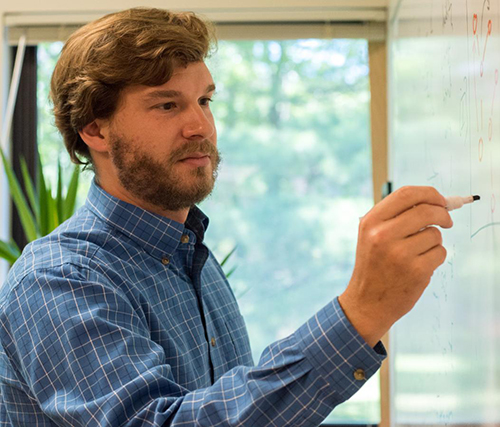Understanding how superspreading occurs can help clinical lab leaders slow and even prevent the spread of SARS-CoV-2 within their communities and health systems
Clinical laboratories understand the critical importance of preventing the spread of infection. However, according to the Boston Globe, researchers worldwide are learning that roughly 80% of new COVID-19 cases are caused by just 10% of infected people. Those people are called superspreaders.
It’s critical that medical laboratory managers are aware of the role superspreaders play in transmitting SARS-CoV-2, the coronavirus that causes the COVID-19 illness.
Clinical lab leaders who understand how superspreading occurs can take steps to protect staff, patients, and anyone who visits the facility. Because lab personnel such as couriers and phlebotomists, among others, come into contact with large numbers of people daily, understanding how to identify superspreaders could limit transmissions of the coronavirus within the laboratory, as well as within hospital networks.
Superspreading versus Plodding
Influenza and other viruses tend to spread in a way that epidemiologists call “plodding.” One person infects another, and the virus slowly spreads throughout the population. However, scientists around the globe are finding that SARS-CoV-2 transmission does not fit that pattern. Instead, a few infected people appear to be transmitting the virus to dozens of other people in superspreading events, Boston Globe reported.
“You can think about throwing a match at kindling. You throw one match, it might not light the kindling. You throw another match, it may not light the kindling. But then one match hits the right spot and all of a sudden the fire goes up,” Ben Althouse, PhD, principal scientist and co-chair of epidemiology at the Institute for Disease Modeling in Bellevue, Wash., told the Boston Globe.
But because roughly 90% of infected people aren’t spreading the virus, identifying who the superspreaders are can be a challenge. Nevertheless, limiting situations in which superspreading is likely to occur could greatly reduce the spread of infection.

Examples of Superspreading Events
One of the first big outbreaks in the United States was an example of a superspreading event. The Biogen (NASDAQ:BIIB) leadership conference in late February in Boston resulted in at least 99 cases of COVID-19 just in Massachusetts, reported the Boston Globe.
Several superspreading events have occurred in houses of worship. One well-documented example prompted a CDC Morbidity and Mortality Weekly Report, titled, “High SARS-CoV-2 Attack Rate Following Exposure at a Choir Practice—Skagit County, Washington.” The 122-member choir met for practice twice in March. On March 3 no one had symptoms, but one person had cold-like symptoms at the March 10 practice. Eventually, 53 members tested positive for SARS-CoV-2.
On May 30, a Texas family held a birthday party, Medical Xpress reported. Twenty-five people attended the party, which only lasted a few hours. The family followed the state’s guidelines for gatherings, however one of the hosts was infected with the SARS-CoV-2 coronavirus and wasn’t aware of it. Seven attendees contracted it, and those seven spread the virus to an additional 10 family members. A total of 18 members of a single family were infected.
There are commonalities among the documented superspreading events. Most occur indoors, often in poorly ventilated areas. Some activities cause more respiratory droplets to be expelled than others, such as singing. Some respiratory droplets are released simply by breathing, and many more are expelled when a person talks. Talking louder expels even more droplets into the air.
Are Some People More Likely to Spread the Coronavirus than Others?
The fact that so few people are responsible for the majority of transmissions of the virus raises questions. Do some people simply have more virus particles to shed? Is biology a factor?
“I think the circumstances are a lot more important,” Kristin Nelson, MPH, PhD, Assistant Professor of Epidemiology at Emory University told the Boston Globe.
One factor may be how long the SARS-CoV-2 coronavirus is in the body before symptoms of the COVID-19 illness manifest.
“If people got sick right away after they were infected, they might stay at home in bed, giving them few opportunities to transmit the virus,” noted Scientific American in “How ‘Superspreading’ Events Drive Most COVID-19 Spread.” However, CDC states on its website that “The incubation period for COVID-19 is thought to extend to 14 days, with a median time of 4-5 days from exposure to symptoms onset. One study reported that 97.5% of persons with COVID-19 who develop symptoms will do so within 11.5 days of SARS-CoV-2 infection.”
During that time, infected individuals may transmit the virus to dozens of other people. The CDC estimates that about 40% of transmission occurs in pre-symptomatic people, Scientific American reported.
But it’s not all bad news. The fact that circumstances may be more important than biology might be good news for clinical laboratories. “Knowing that COVID-19 is a superspreading pandemic could be a good thing. It bodes well for control,” Nelson told the Boston Globe.
Clinical laboratory managers are encouraged to follow CDC recommended safety protocols, titled, “Guidance for General Laboratory Safety Practices during the COVID-19 Pandemic.” They include social distancing, setting up one-way paths through lab areas, sanitizing shared surfaces such as counters and benchtops, and implementing flexible leave policies so that sick employees can stay home.
Following these guidelines, and being aware of superspreaders, can help medical laboratories and anatomic pathology groups keep staff and customers free of infection.
—Dava Stewart
Related Information:
Most People with Coronavirus Won’t Spread It. Why Do a Few Infect So Many?
Birthday Party Leaves 18 in Texas Family with Coronavirus
How the Biogen Leadership Conference in Boston Spread the Coronavirus
Interim Clinical Guidance for Management of Patients with Confirmed Coronavirus Disease (COVID-19)
COVID-19 Pandemic Planning Scenarios Guidance for General Laboratory Safety Practices during the COVID-19 Pandemic



